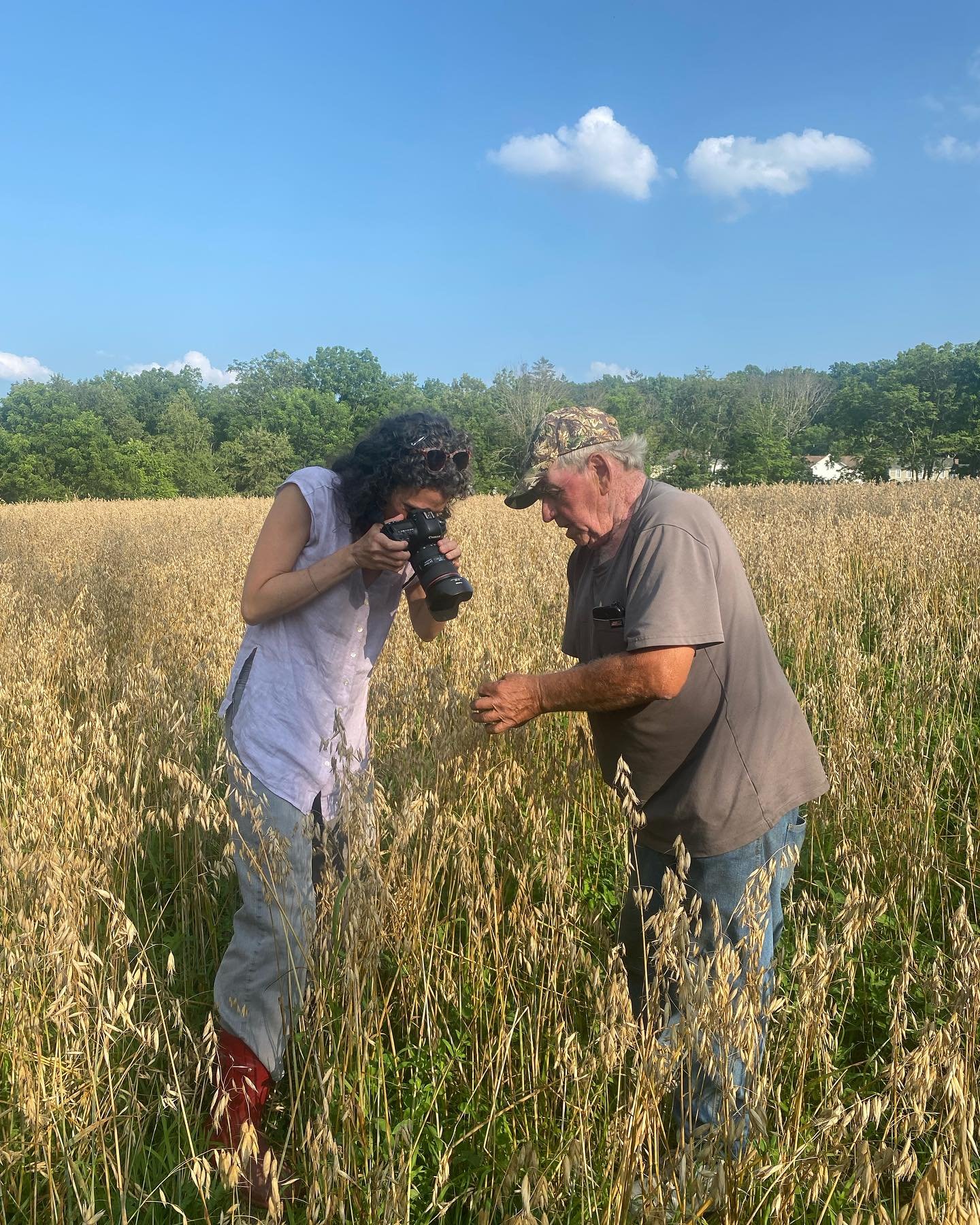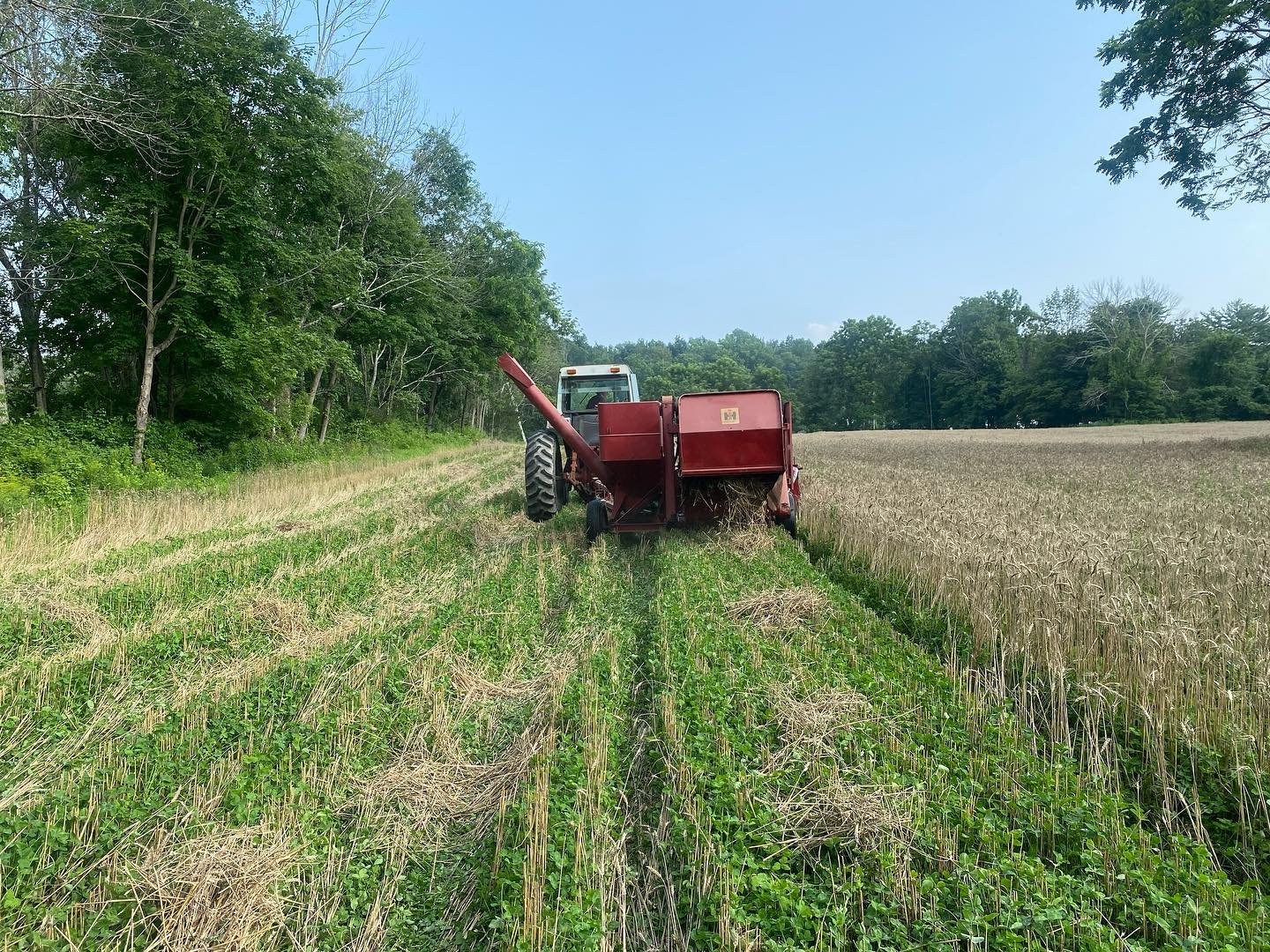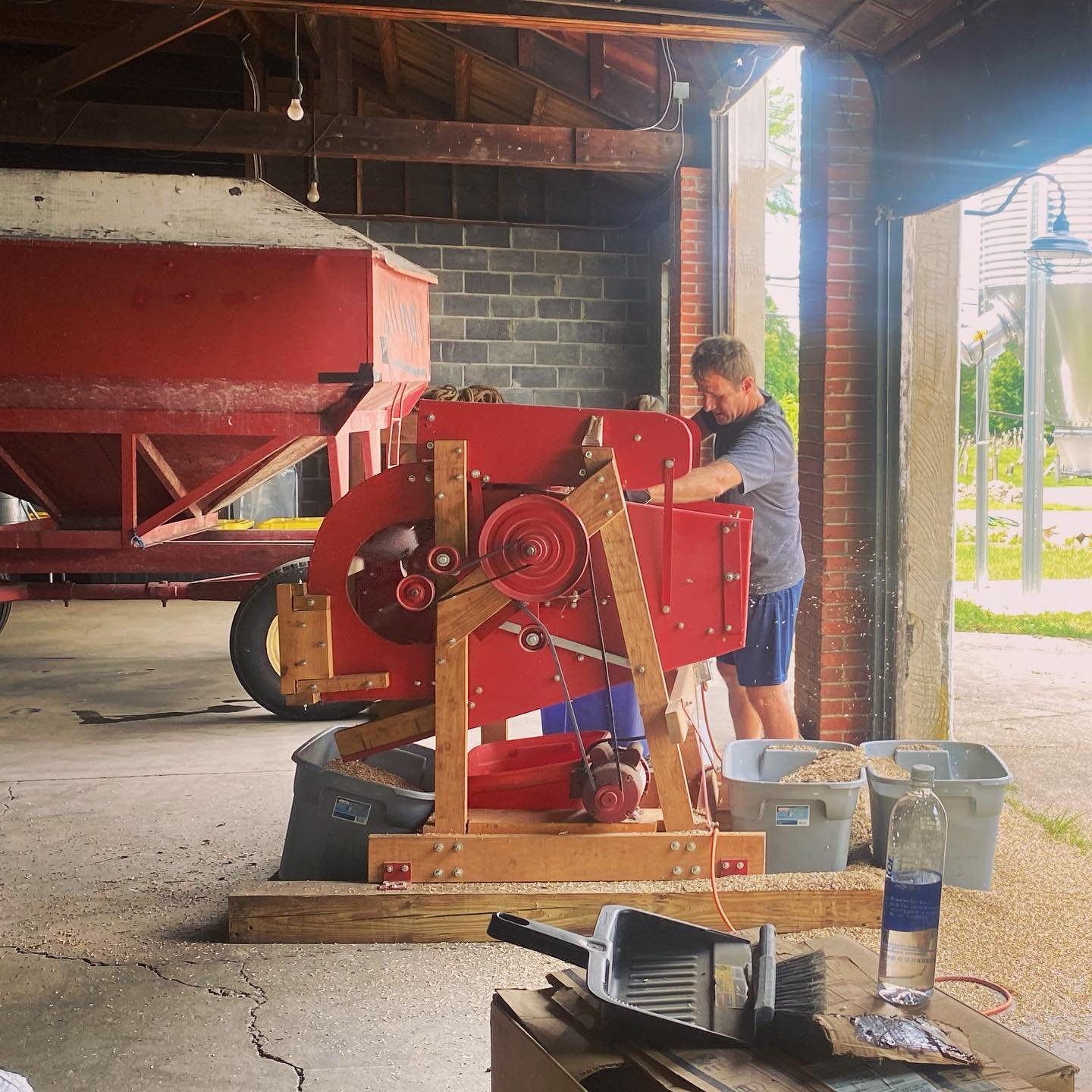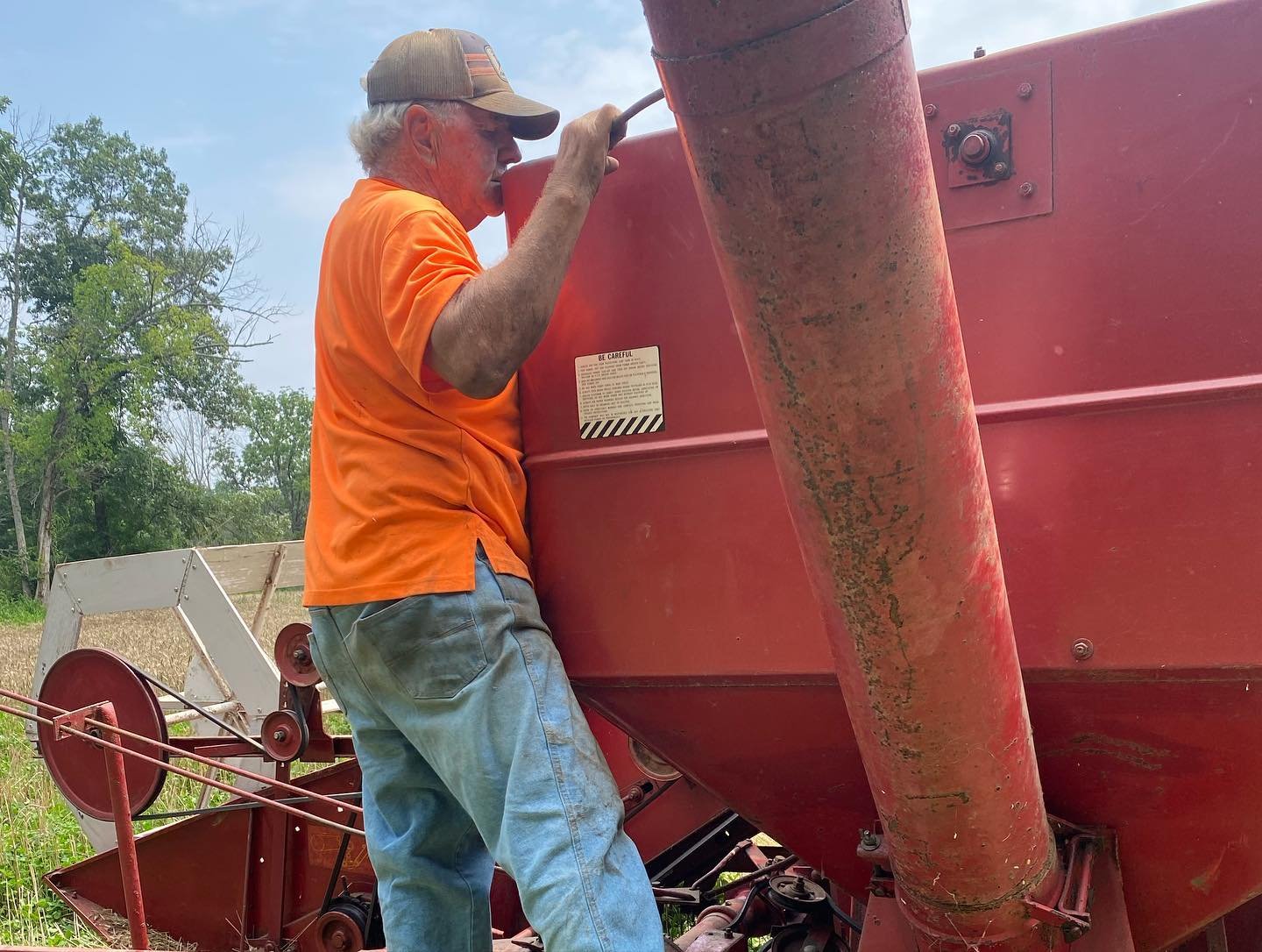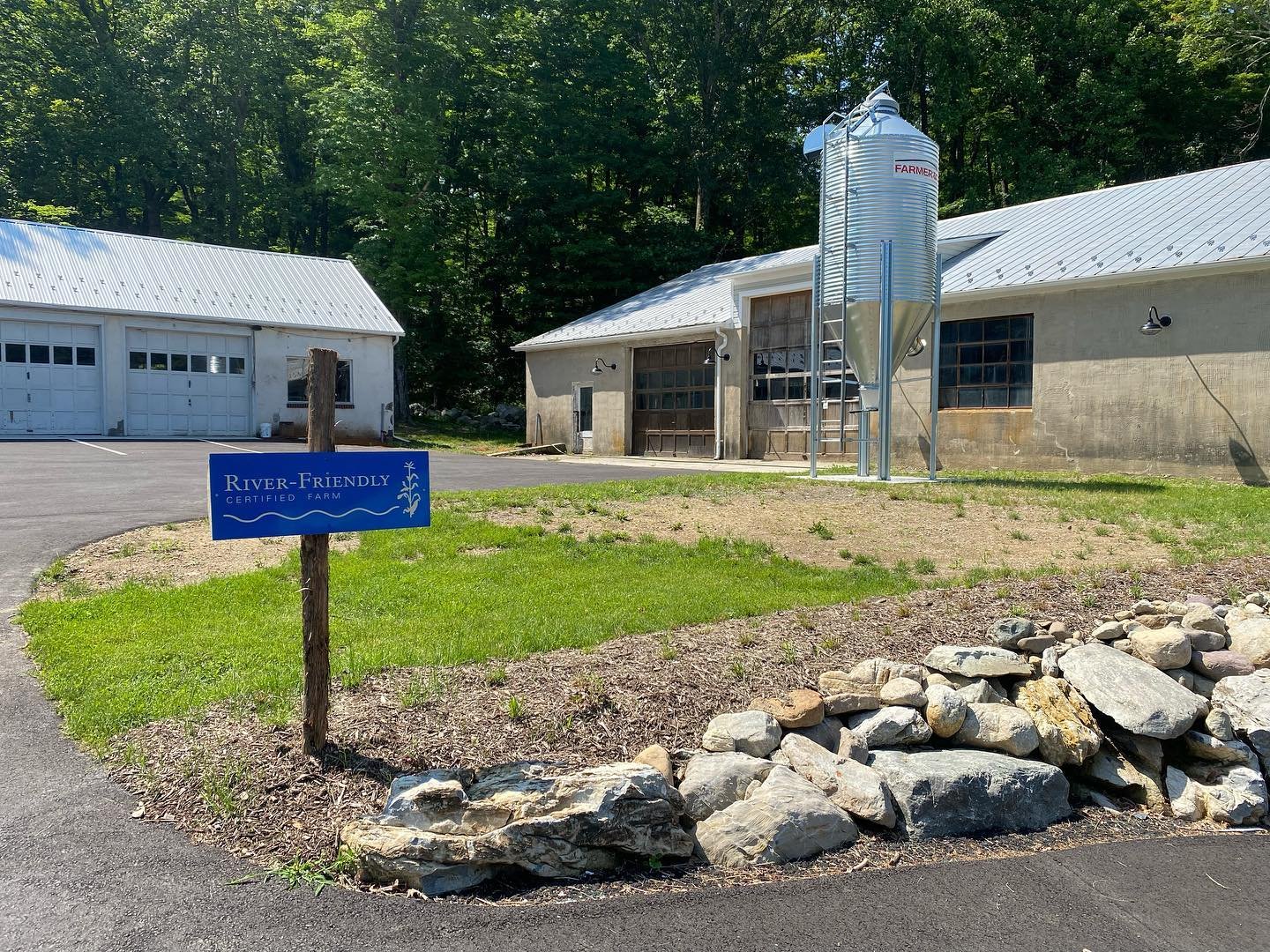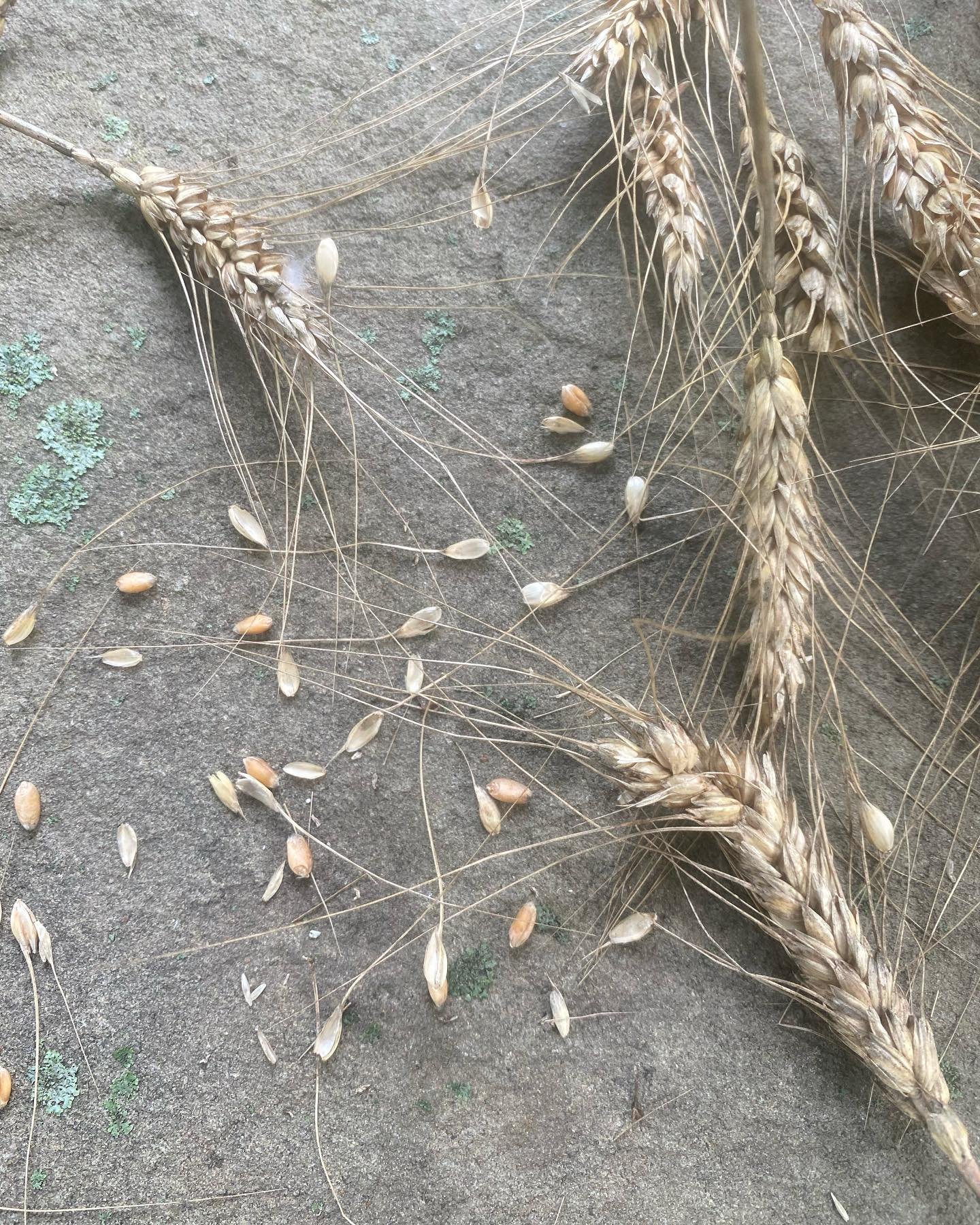Bringing in the Harvest
The Redeemer Winter Wheat at Ruthie’s Farm is off the fields and the harvest is complete!
How can we tell when the wheat is ready to harvest? Just like every other aspect of this work, we pay close attention, using our experience and our senses. One way to test wheat’s readiness is to rub the ear of the stalk to release the berries and then bite them. If they are hard and crack, the wheat is ready! But if it’s soft or gummy, it needs more time.
Instead of pesticides, we use red clover as a cover crop to suppress to suppress the weeds, particularly Canadian thistle. We don’t want to apply chemicals to the land since we are building soil health for both people and the planet.
As always, thank you to Dr. Elizabeth Dyck of OGRIN (Organic Growers' Research and Information-Sharing Network) for her guidance and expertise from the beginning of this project. Dr. Dyck’s professional expertise with soil management and crop production has been invaluable over the years as we aid farmers in growing these heritage grains. Ruthie’s grower John Bennet also deserves applause for the work he has done in supporting our work bringing back naturally grown regional grains.
After harvesting, we sent the grain off to a test lab to ensure it is viable for human consumption. We don’t want the fungus known as fusarium or vomitoxin (yuck, the name sounds awful!) to take hold. The test results showed a safe level of under 1 parts per million (ppm), so now we do the hard work of cleaning the grain and storing it in our shiny new hopper so it’s ready for us to mill into fresh flour and sell to consumers and professional bakers. Hurray for New Jersey grains!
